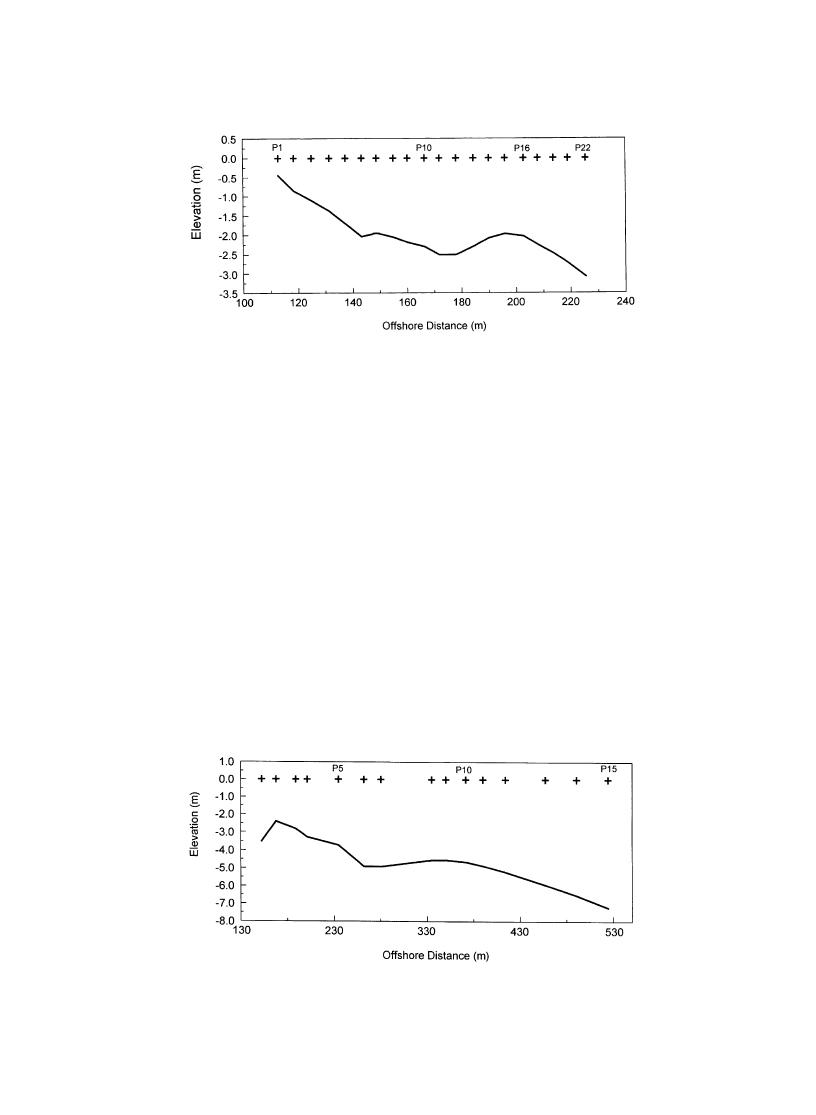
A. Bayram et al. / Coastal Engineering 44 (2001) 7999
85
Fig. 2. Bottom profile surveyed along the measurement transect on September 19, 1986 (SUPERDUCK experiment).
tration was measured at several points through the
Sediment transport measurements were made using
vertical as well as at a number of cross-shore loca-
the Sensor Insertion System (SIS), which is a diverless
tions. Simultaneously, the velocity was recorded and
instrument deployment and retrieval system that can
the local transport rate was derived from the product
operate in seas with individual wave heights up to 5.6
of the concentration and velocity.
m (Miller, 1999). An advantage of the SIS is that it
Longshore bars were typically present during
allows direct measurement of wave, sediment concen-
SANDYDUCK, making it possible to assess the
tration, and velocity together with the bottom profile
effects of these formations on the transport rate dis-
during a storm. The SIS is a track-mounted crane with
tribution. As an example, the bottom profile measured
the instrumentation placed on the boom. A standard
during the storm on October 20, 1997, is shown in
SIS consists of OBS to measure sediment concentra-
Fig. 3. The beach at Duck is composed of sand with a
tion, an electromagnetic current meter for longshore
median grain size (d50) of about 0.4 mm at the
and cross-shore velocities, and pressure gauge for
waves and water levels. The wave conditions and
shoreline dropping off at a high rate to 0.18 mm in
mean longshore current velocities for five storm cases
the offshore. In the region where d50 = 0.18 mm (most
employed in this investigation are described in Table
of the typical surf zone width), sediment sampling has
2. During the SANDYDUCK experiment the concen-
yielded d35 = 0.15 mm (diameter corresponding 35%
Fig. 3. Bottom profile surveyed along the measurement transect on October 20, 1997 (SANDYDUCK experiment).



 Previous Page
Previous Page
